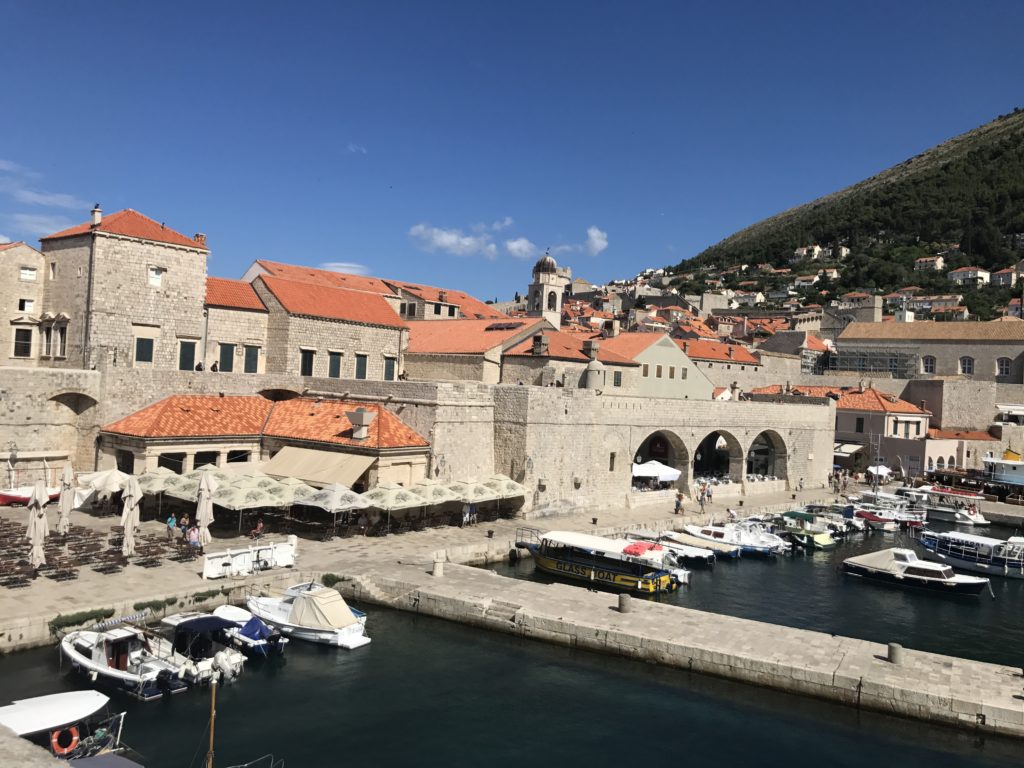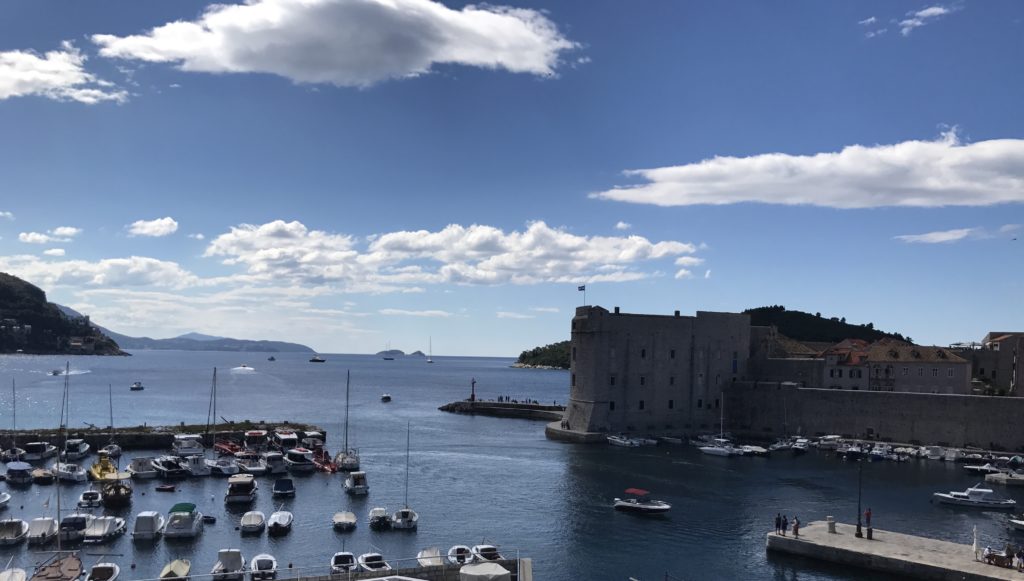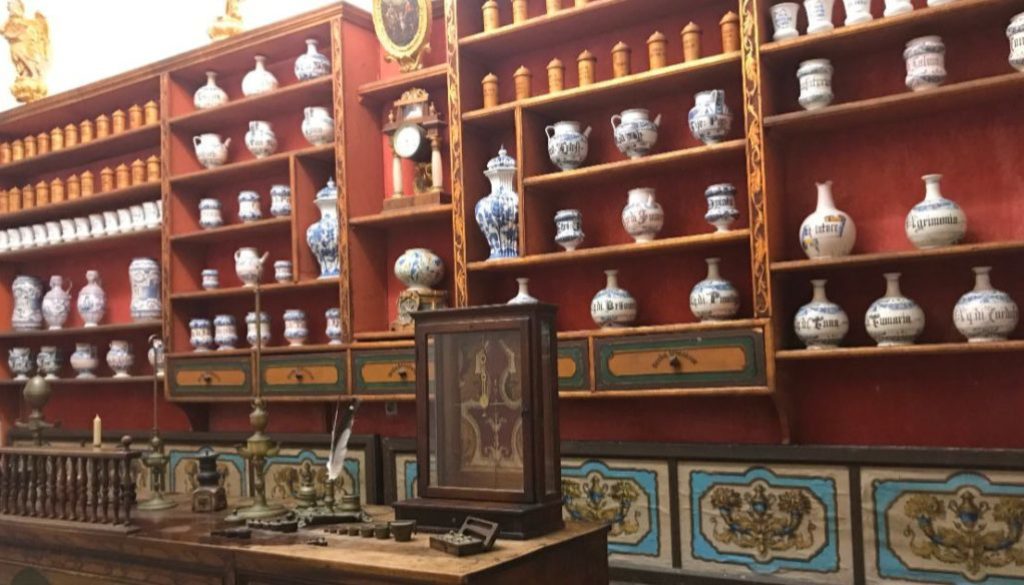Dubrovnik’s History
It was particularly fascinating to learn about Dubrovnik’s History because we had visited Venice just three months earlier. Their history is so intertwined that it is most interesting to hear them side by side.
Our free walking tour guide, Ivana, is a native of Dubrovnik born in 1992 in the middle of the siege. She was extremely knowledgeable about Dubrovnik and the history of the entire region. Being born during the war and having lived here for her entire life, she had a personal touch that’s rare to find. So we ended up taking two tours with her – one on old history and one on the recent war in the Balkans.
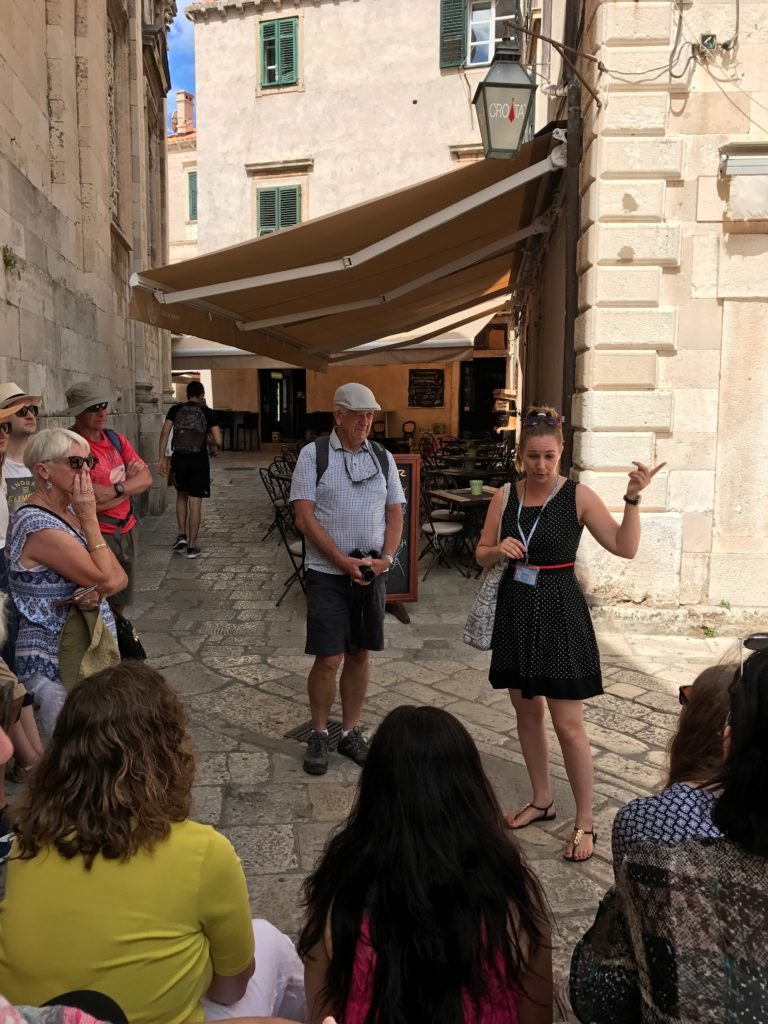
Dubrovnik’s History
The tiny republic of Dubrovnik was an independent country from 14th to the 19th century.
Their primary rival has always been and still is Venice. It was even under Venice rule between 1205-1358! So much so that the Main Street of Dubrovnik is called Stradun, meaning big ugly street in Venician language. The Republic of Venice attacked Dubrovnik over and over but could not take over for centuries> Dubrovnik had two things that protected it – the mighty wall around Dubrovnik and the smart rulers.
In those times Ottomans ruled much of Eastern Europe but did not rule Dubrovnik. The shrewd leaders of Dubrovnik made a deal with the Ottomans that for a small annual fee, Ottomans will protect Dubrovnik. Ottomans kept their word while they were in power.
Dubrovnik saw other calamities e.g. the many earthquakes! In particular, the earthquake of 1667 was the worst. Half the city’s population perished in the earthquake. Almost every structure collapsed but The Wall survived.
The city was rebuilt in the Baroque style. Because of that, the city looks so much the same and beautiful. The only non-Baroque style building is a church built to protect Dubrovnik from earthquakes. Famously, it’s the only building that survived the 1667 earthquake.
In 1808 Dubrovnik, weakened by the earthquake, finally lost to Napoleon and was ruled by him until his decline in 1815. Thereafter it became part of the Austro-Hungarian empire. Later it became part of Croatia and has been ever since.
When Yugoslavia was formed after World War II, Dubrovnik became part of Yugoslavia, Land of South Slovaks.
Government of Dubrovnik
Until Napoleon’s arrival, Dubrovnik was a democracy, led by a Rector. He functioned as the president of Dubrovnik. But, with constraints –
- He must be 50 years old at the time of the elections.
- His term would be one month long.
- He could not be reelected for 2years.
- He must live in the modest Rector palace.
Thus, Rector was motivated to make his mark within his one-month presidency and achieve what he promised. Apparently, the government worked very well and did much of the governing. The Rectors tended to be wealthy but have the humility to live alone in the Rector’s palace for their tenure.
Rector’s Palace in Dubrovnik
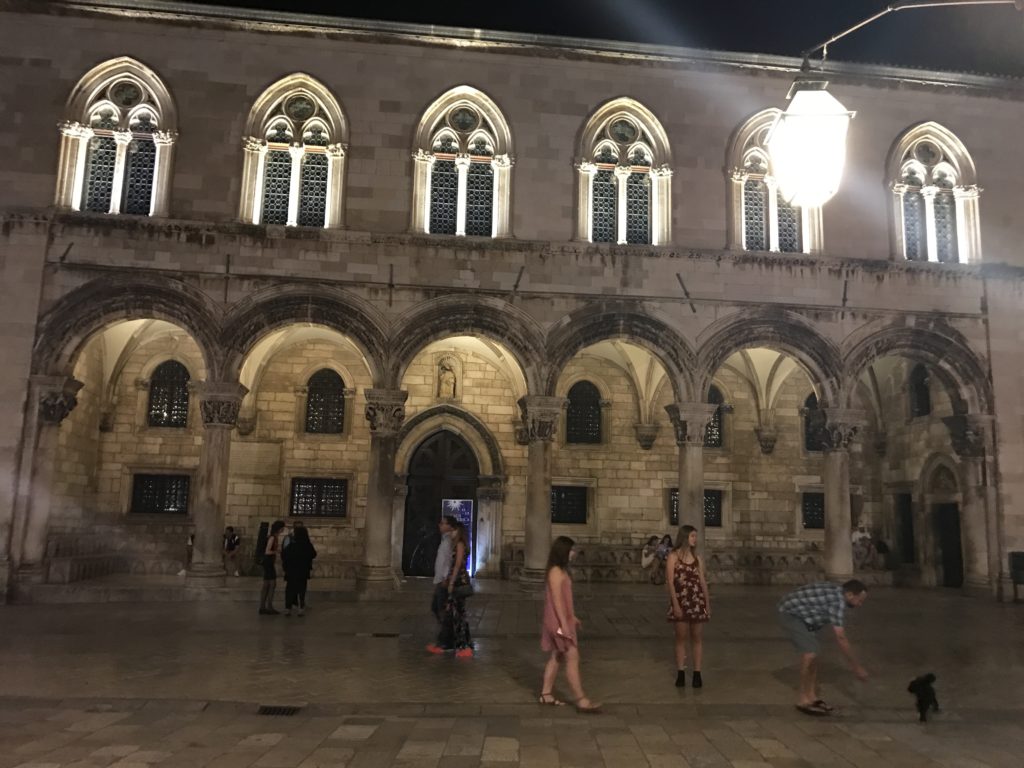
He was only allowed to leave for state business with the Senate’s permission. He lived here for the entire month, without his family.
The Rector’s palace in Dubrovnik now hosts an interesting museum that tells a lot about the story of Dubrovnik.
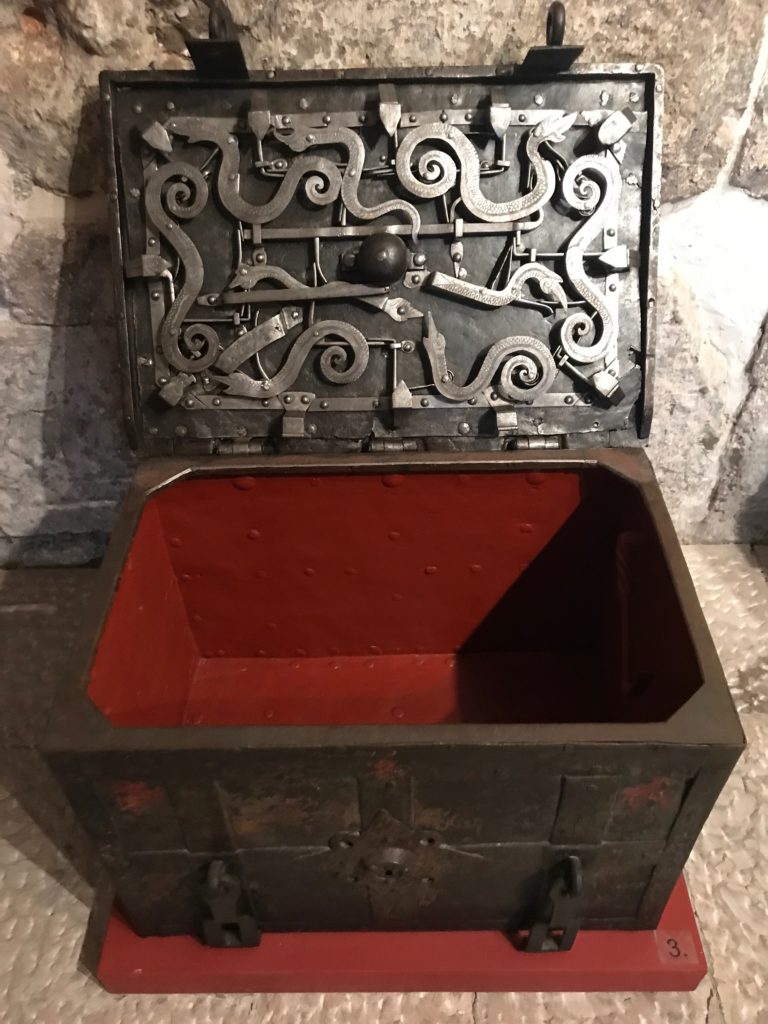
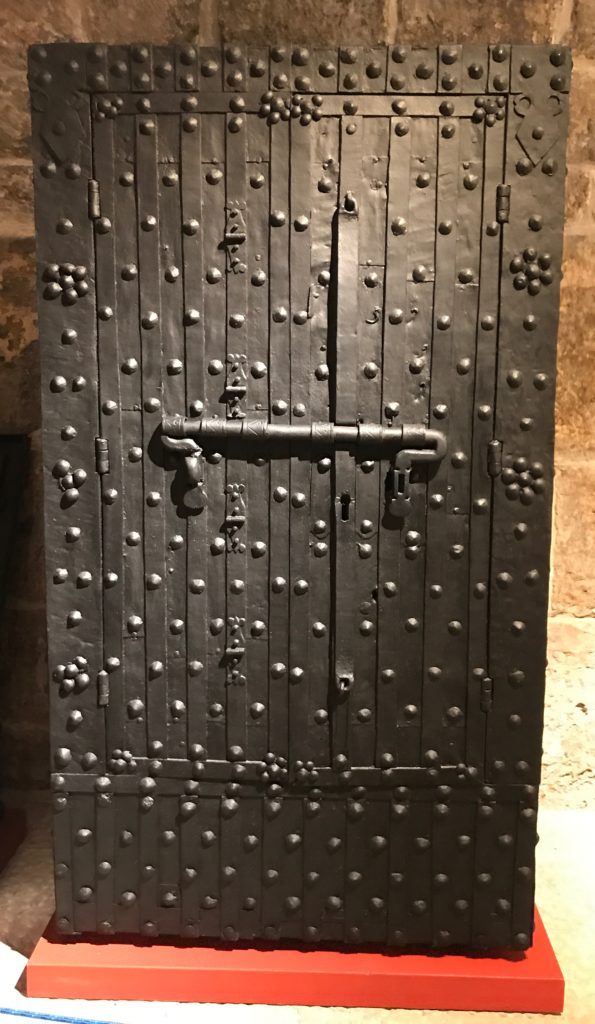
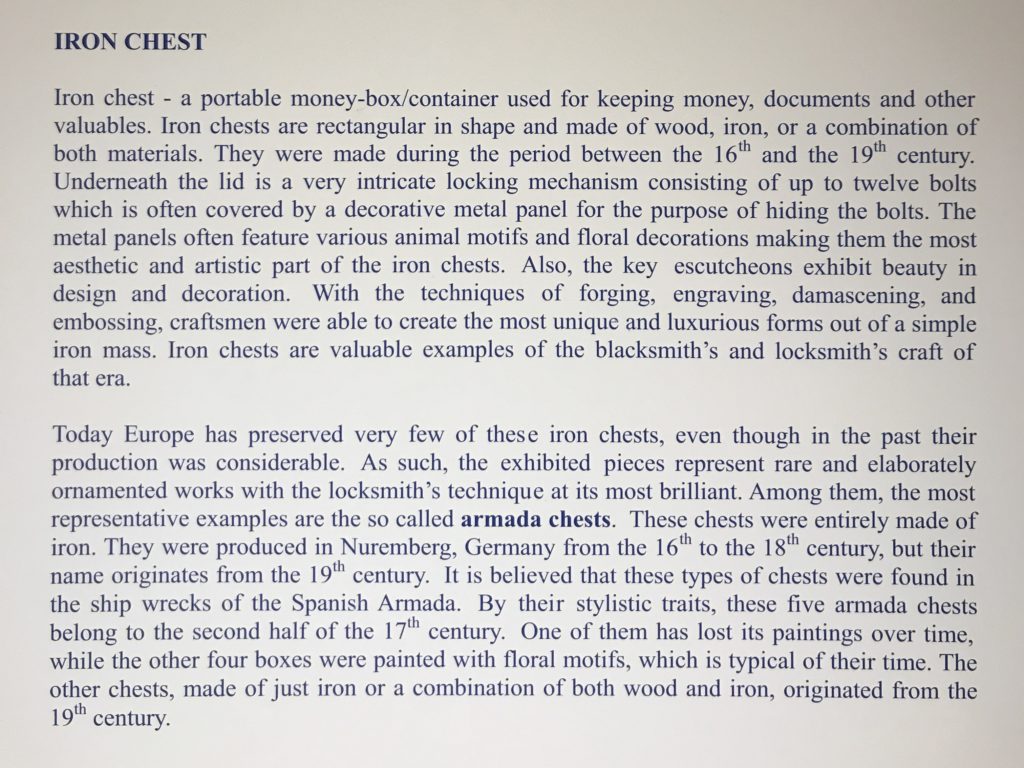
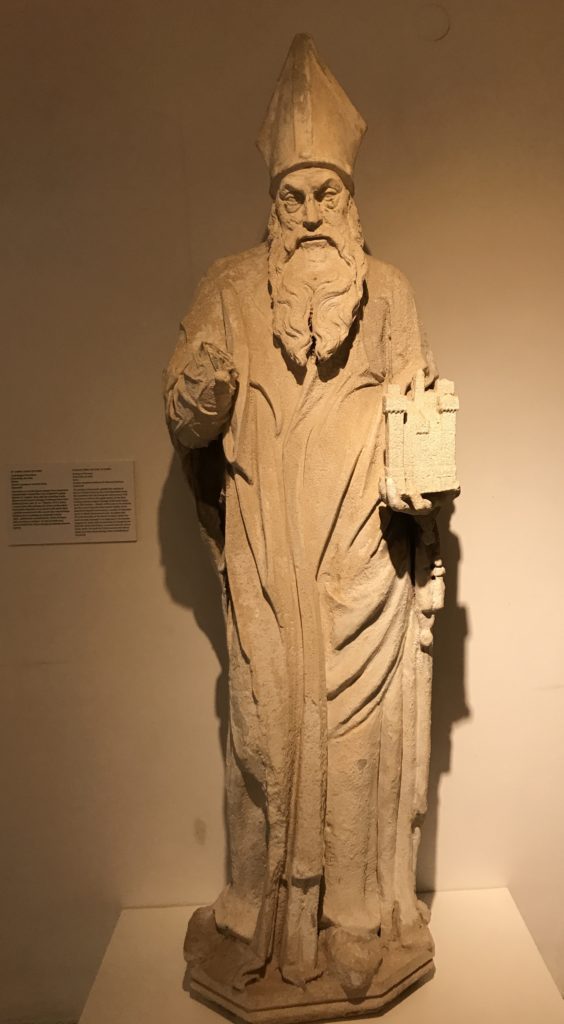
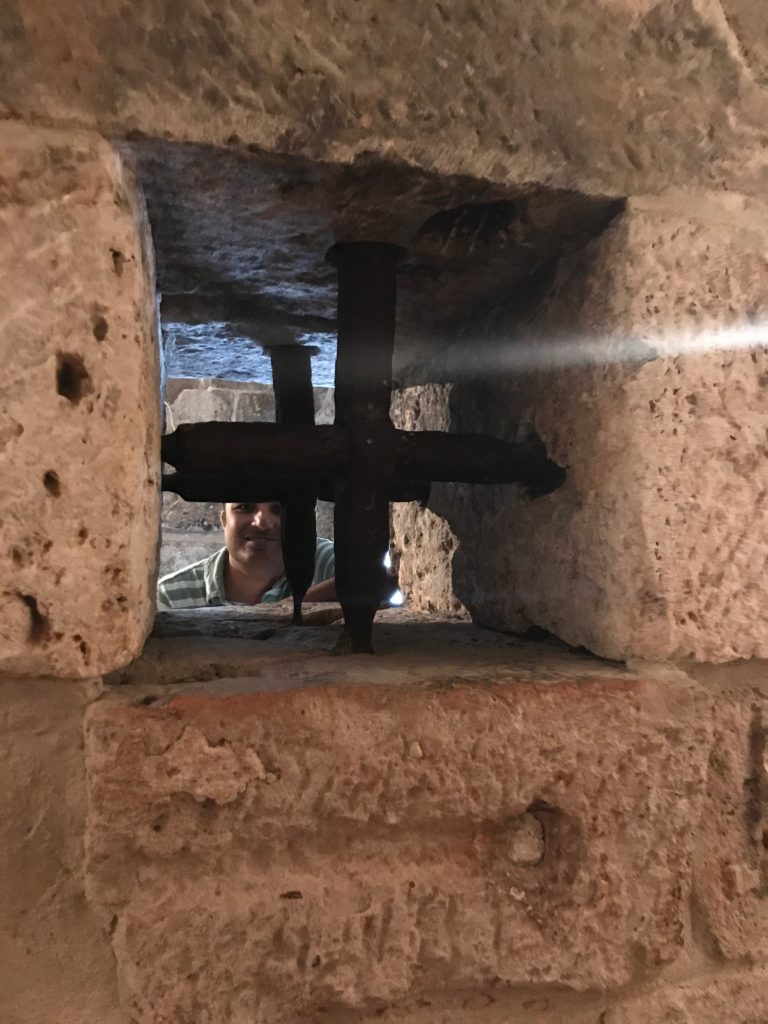
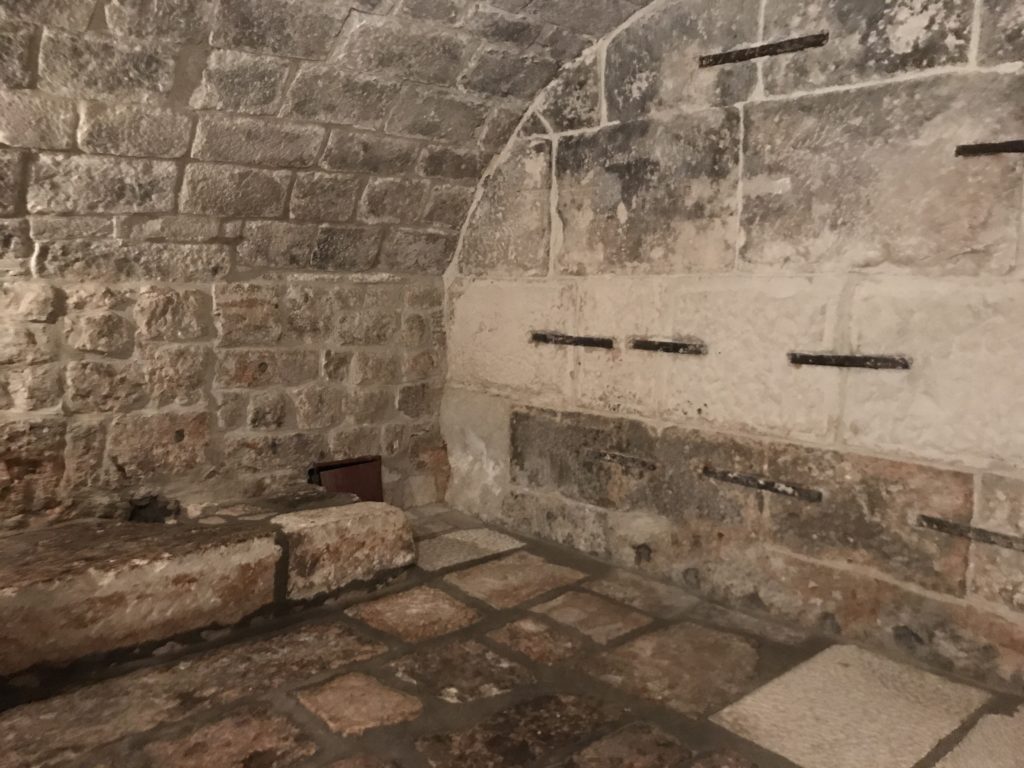
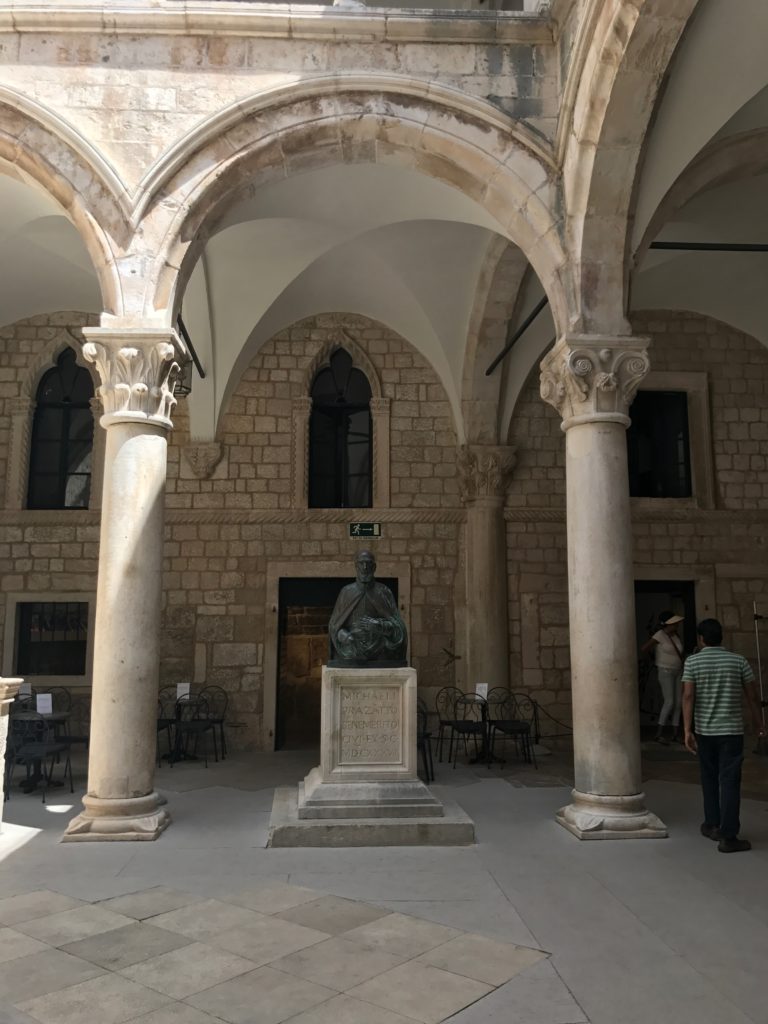
I found a good article about the Rector palace.
Sponza Palace in Dubrovnik
Sponza palace has a memorial room of people that defended the city. It is informative and quite sobering. It’s a must visit if you’re not planning to go up to Nepolean’s fortress. Sponza palace has a small free entrance and will only take a few minutes.
Pharmacy and museum
Dubrovnik has on of the oldest functioning pharmacies in the region, from 1317. Now it’s a pharmacy and museum, located in the monastery.
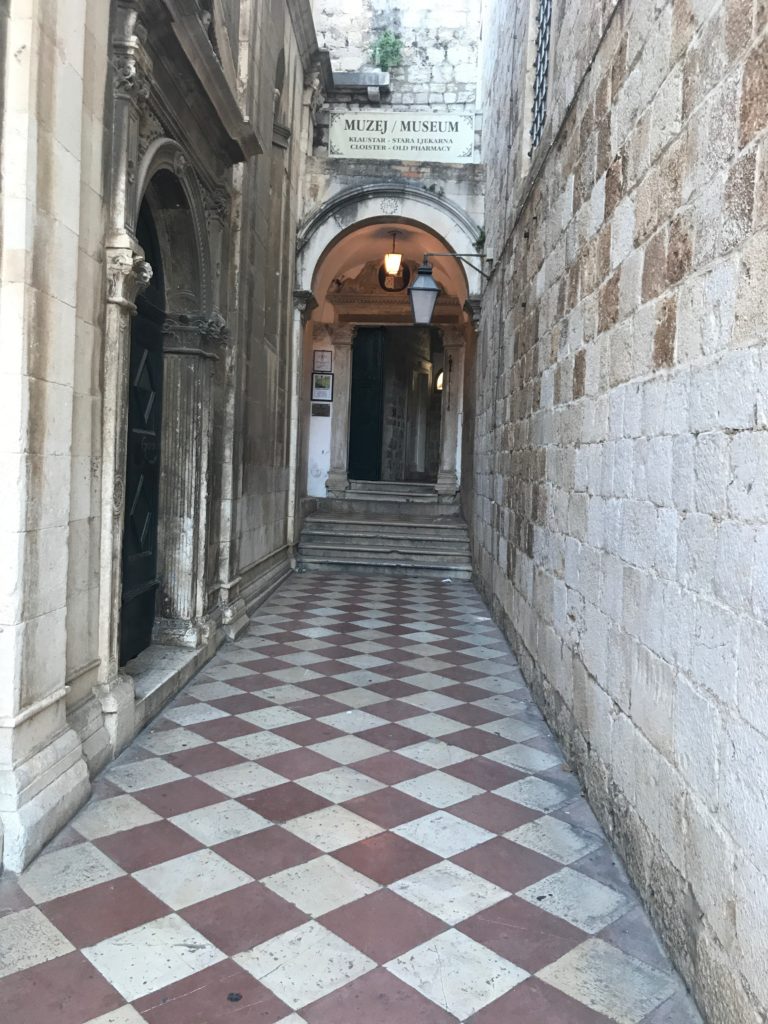
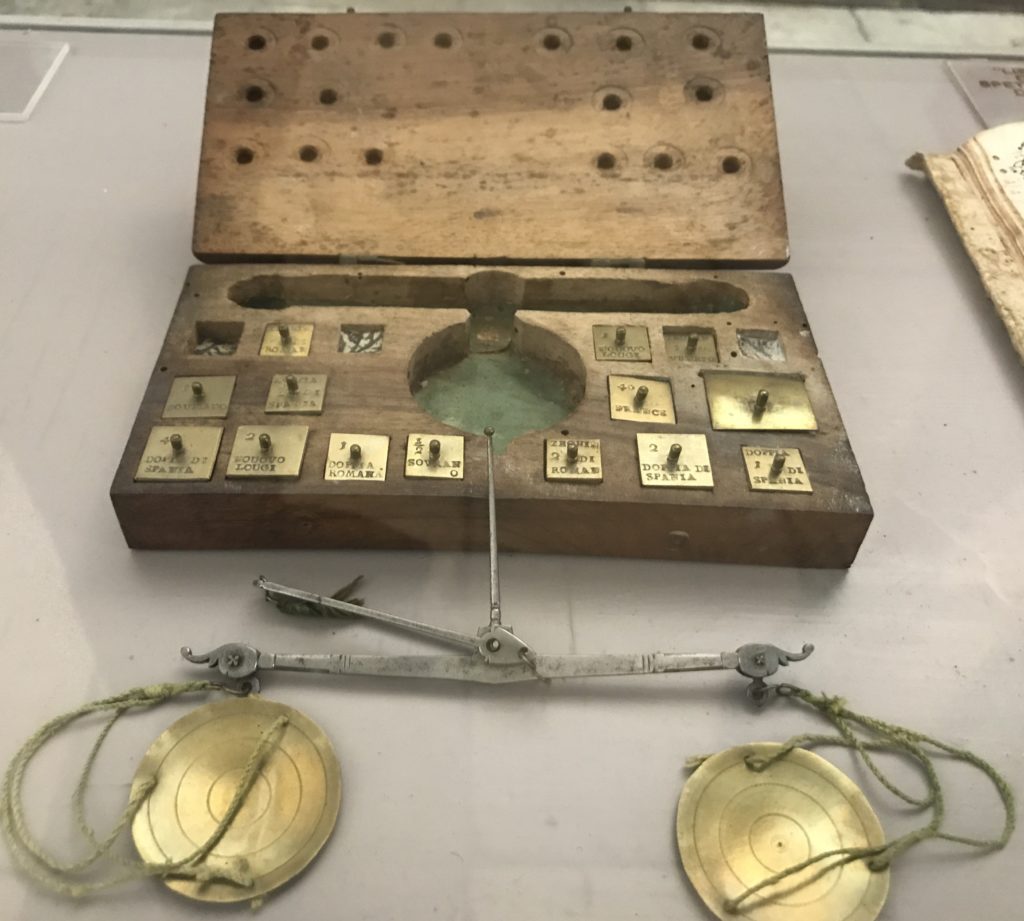
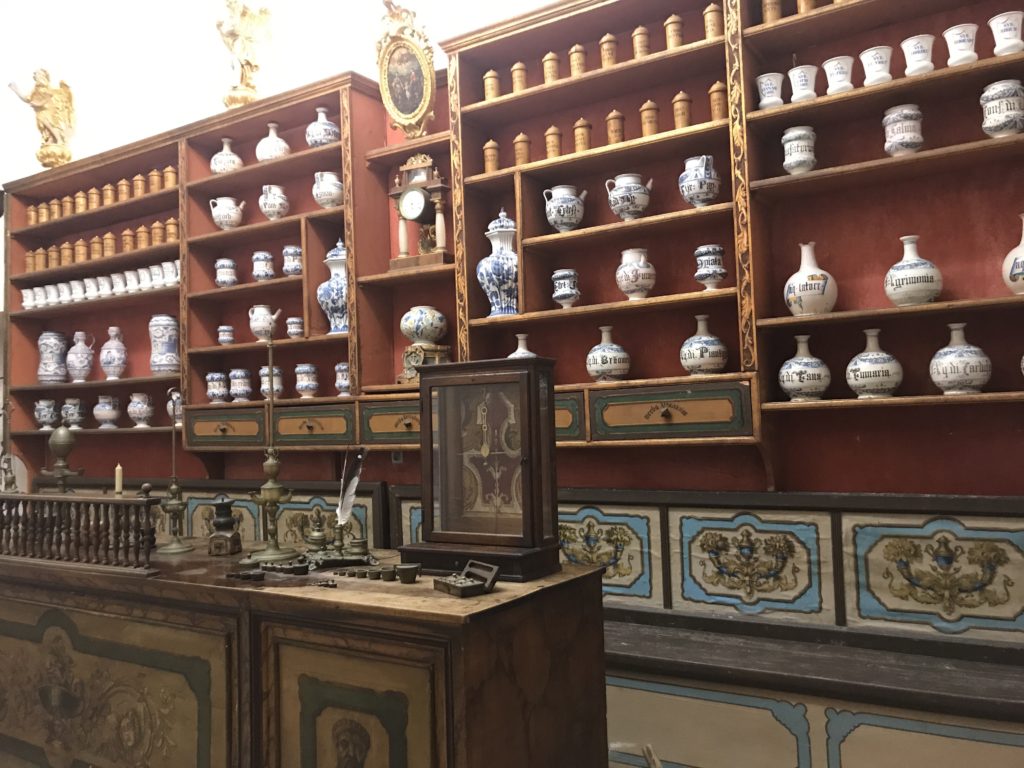
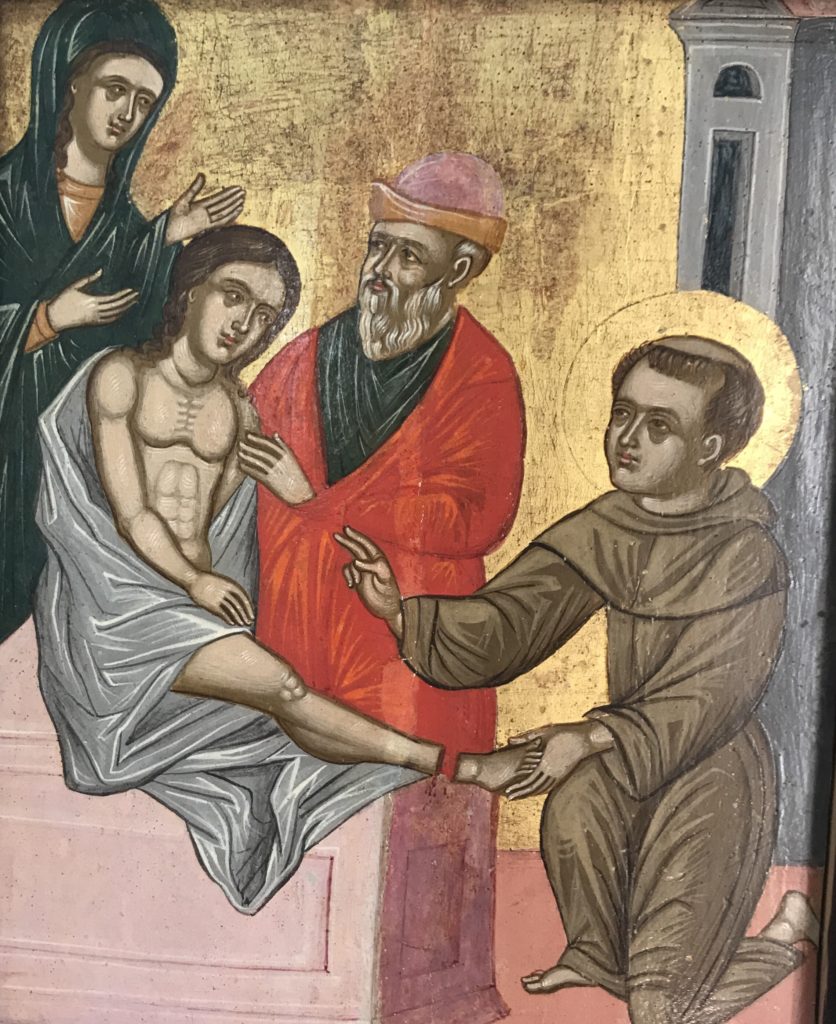
Where does the term Arm Length come from?
St Laurence was a medieval knight that was once regarded and loved as a savior of the city.
He has a column dedicated to him in the front of the main church.
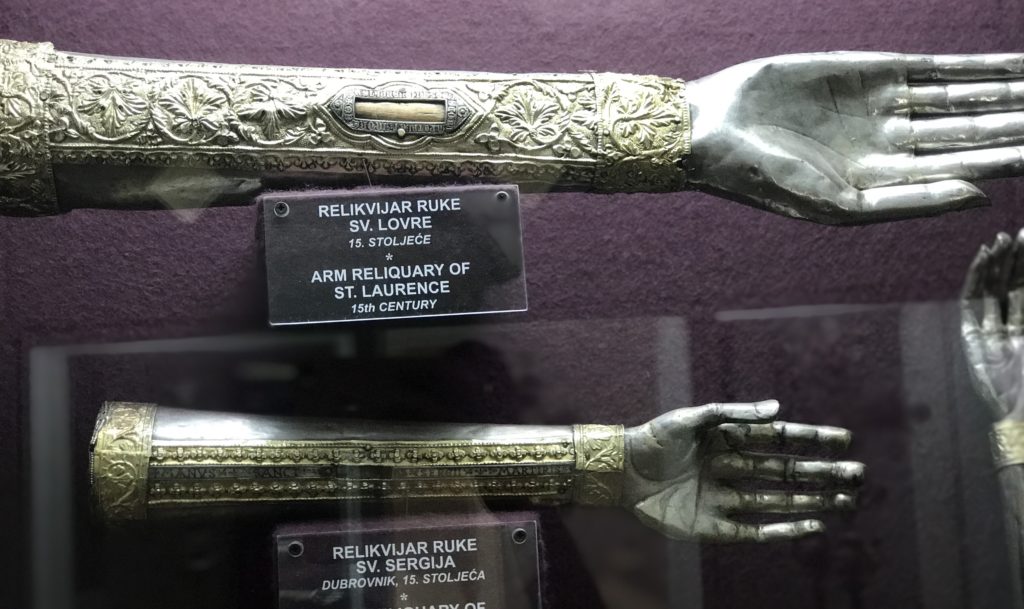
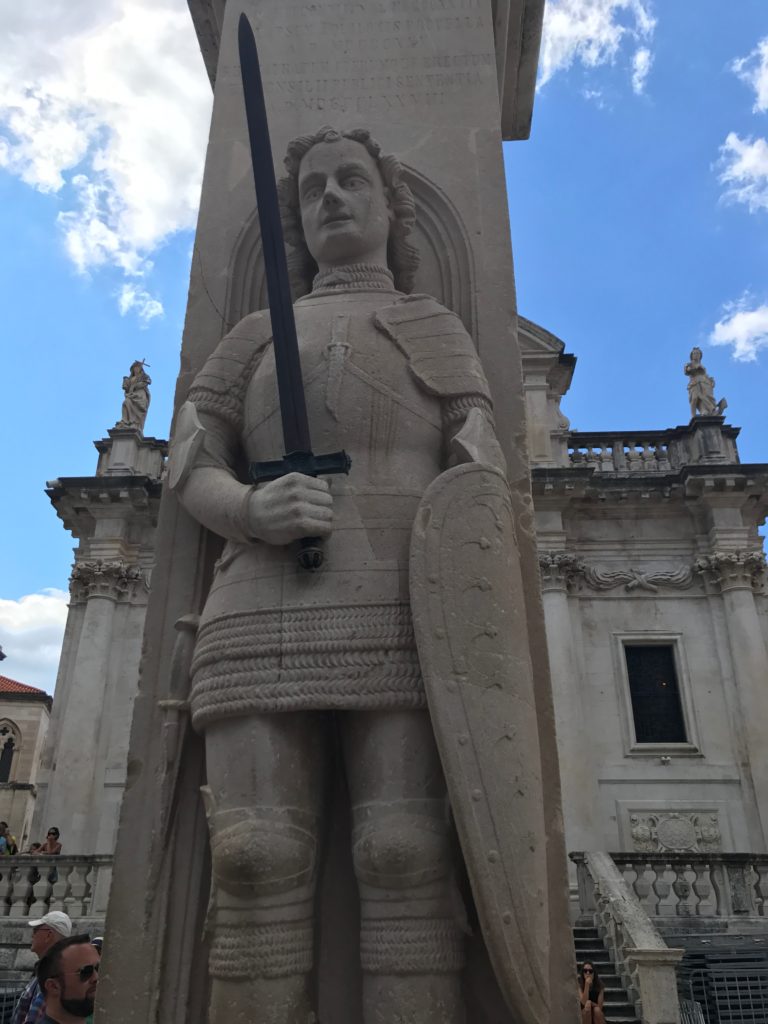
The Main Well and Fountain
The main well and fountain across the pharmacy was built by the Italians on the tiny 30m long river that still feeds the aqua duct and the water fountains in the old city.
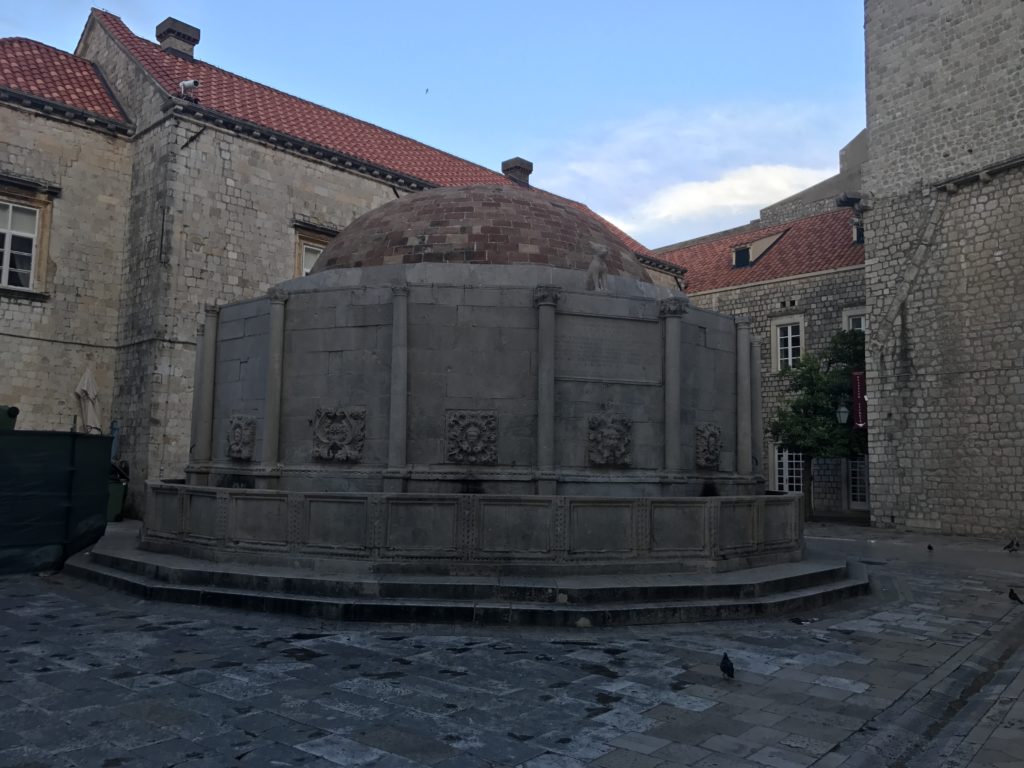
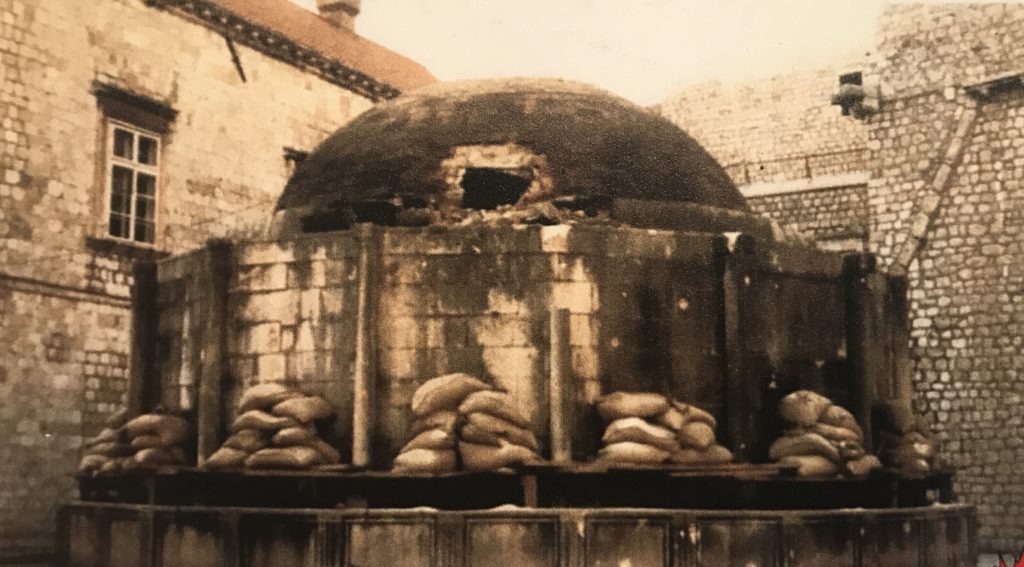
Playing Ball, Kids and a Priest with humor
Ivana, our guide had a fun but important story of the Church of Spain. Back in the day, some kids loved to play ball by this church and it drove the priest nuts. So on the side of the church, he put an inscription that translates to ‘May the peace be with you and remember the one who plays with the ball will eventually die’!
It didn’t do much to deter the kids but it proves that kids used to play ball at this place long before football was said to originate elsewhere in Europe.
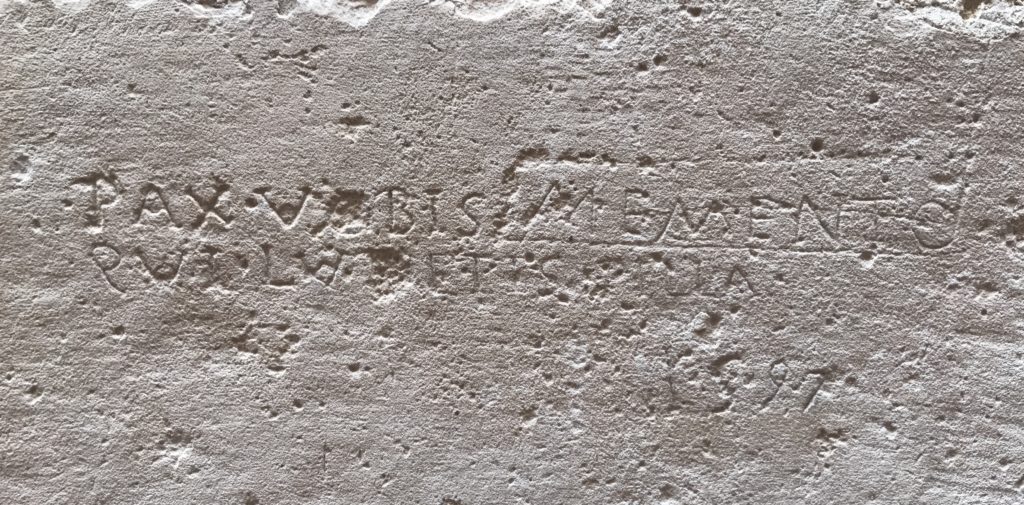
Unwanted Babies of Dubrovnik
In much of Europe, with difficult times when young mothers couldn’t keep her baby, it was common to dump the newborn into the trash. But, not in Dubrovnik. Unlike most places In Europe, Dubrovnik had an orphanage and a process to handle the situation of unwanted babies. A mother could come out in the night with a black hood and leave the newborn in the care of the orphanage. The hood ensured anonymity and no questions were asked. Before giving the baby away, the mother made two identical blankets, one to wrap the baby and one for herself. If her conditions improved, she could use the blanket to claim the baby back from the orphanage.
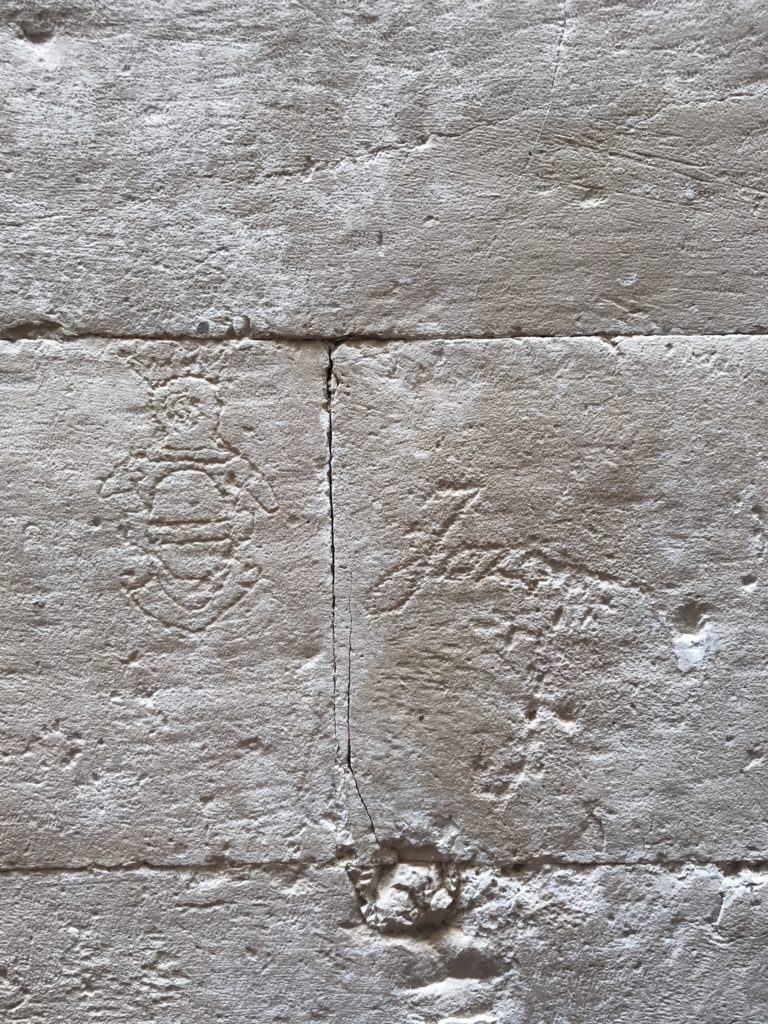
Churches and Synagogue in Dubrovnik
The protector saint of Dubrovnik is Saint Blaise. According to Dubrovnik’s history, he received a vision of an imminent attack. It is said that he saved the city from the tenth attack from Venice. He has been revered through the ages. Today, his relics are preserved in the church.
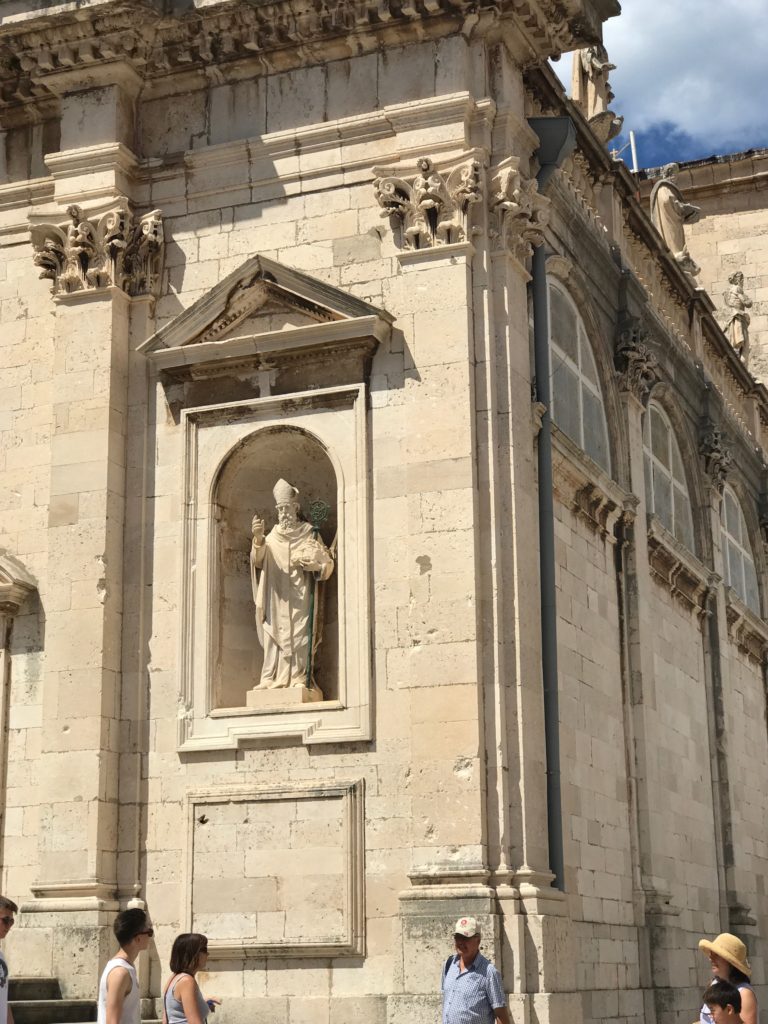
Like many older cities, Dubrovnik has a church everywhere you turn. However, there is just one Serbian Orthodox Church in the city.
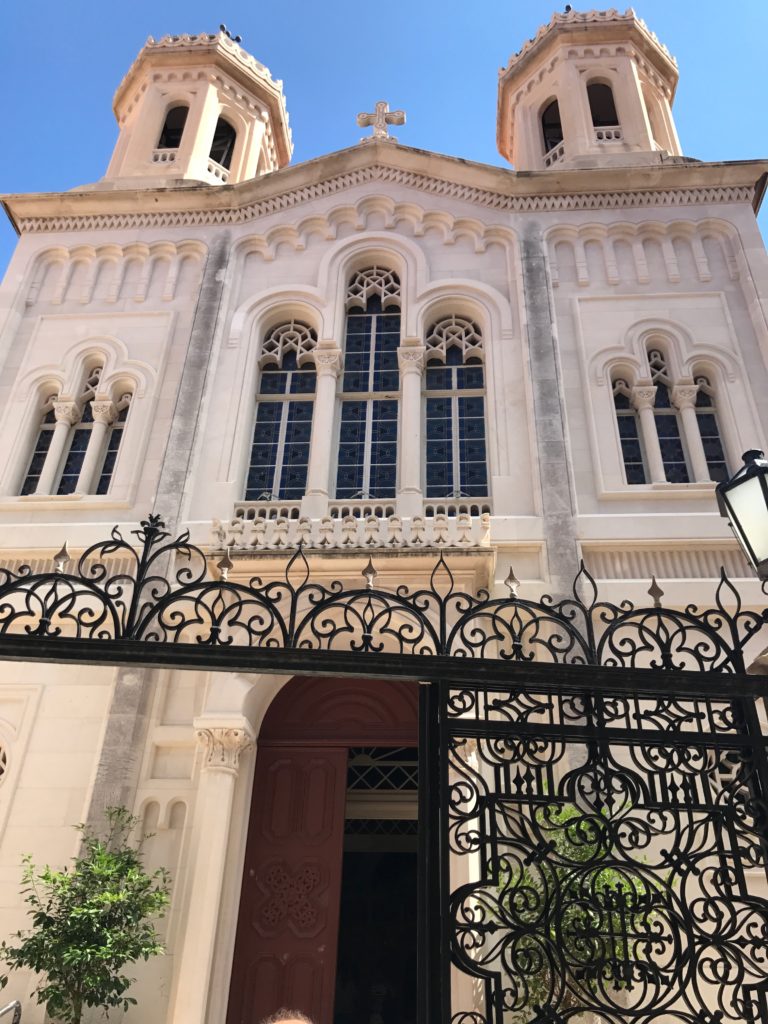
The city has one synagogue but it is now converted into a museum.
Dubrovnik has the oldest Sephardic Synagogue and the 2nd oldest in the world.
A Dominican church is under reconstruction.
Dubrovnik Steps
Dubrovnik also has its ‘steps’, a copy of Roman Spanish steps in Rome. It one of the many areas of Dubrovnik that is popular with tourists and locals alike. People can be found eating and socializing late into the night.
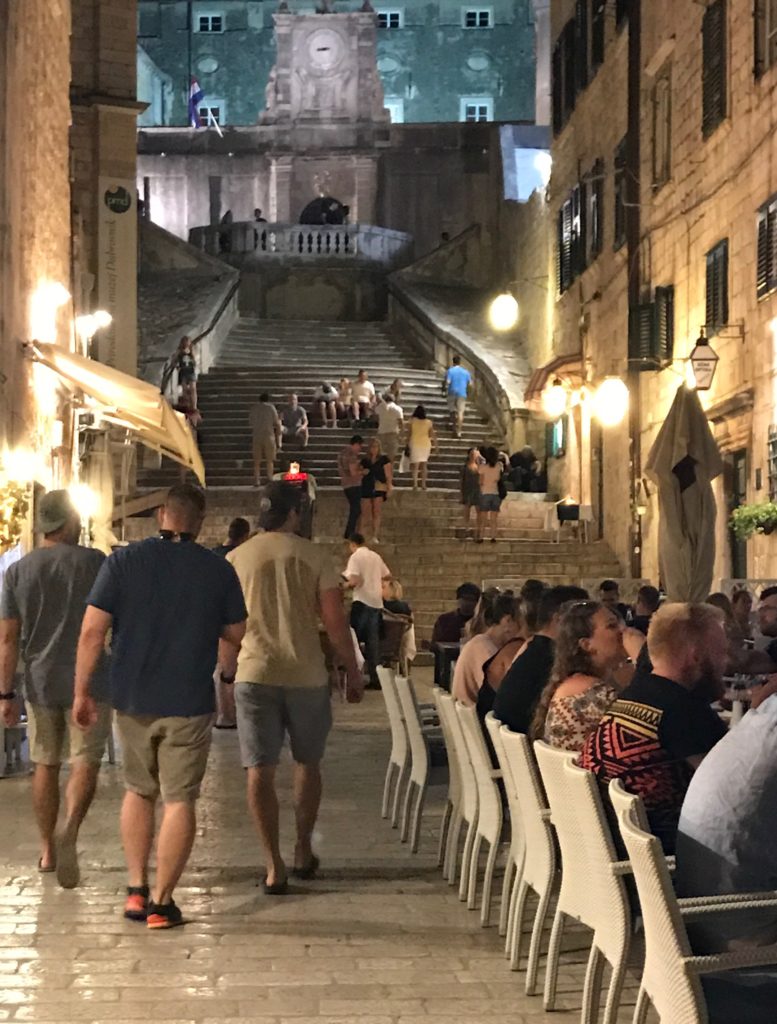
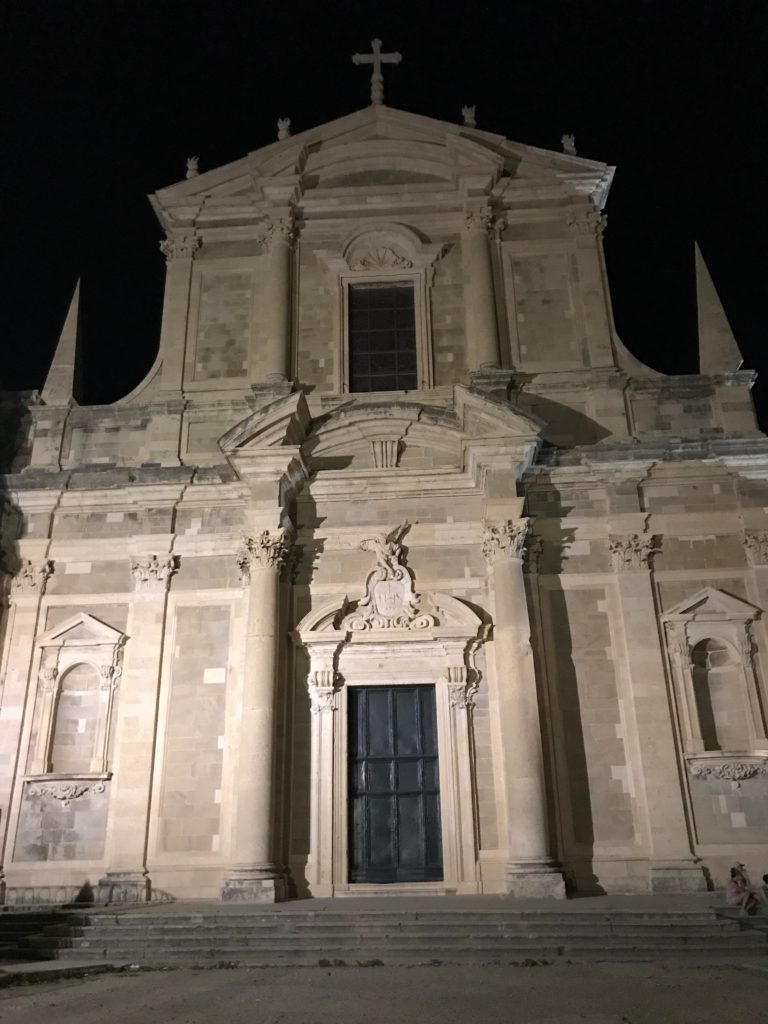
Dubrovnik High School
Near this area is the only high school on the island. It is also one of the top schools in the region, it offers an extremely rigorous curriculum that includes four foreign languages.
Behind the school is a secret hole. Go through the hole in the wall to a fantastic view of the sea. It’s a popular hangout place for the kids.
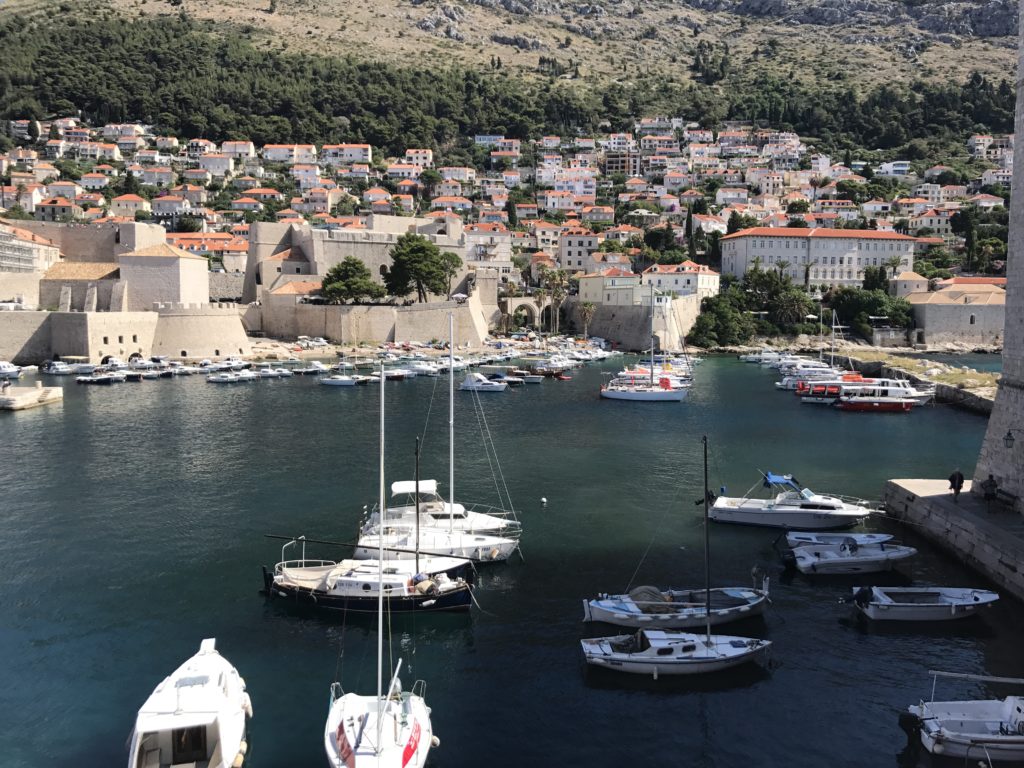
Dubrovnik Ports, Parties and Protection from the Plague
In all of Dubrovnik’s history, it has been very popular with tourists and traders. With that come many opportunities and challenges. Dubrovnik has great water transportation like its rival Venice. But, it did better at protecting itself from the plague and controlling disease outbreaks.
